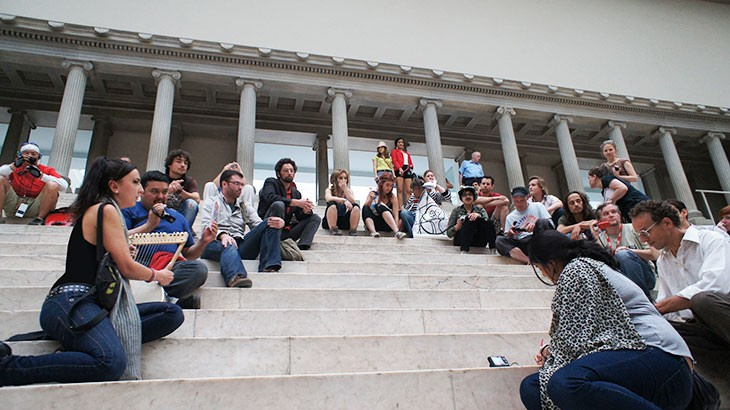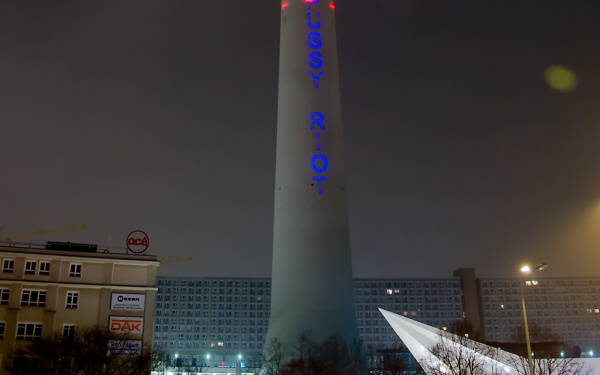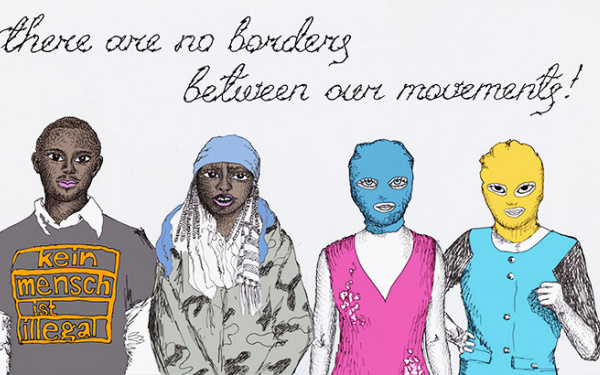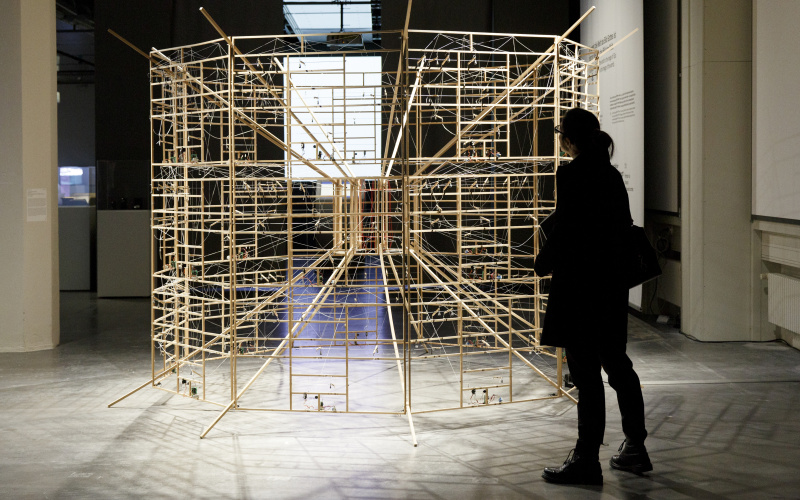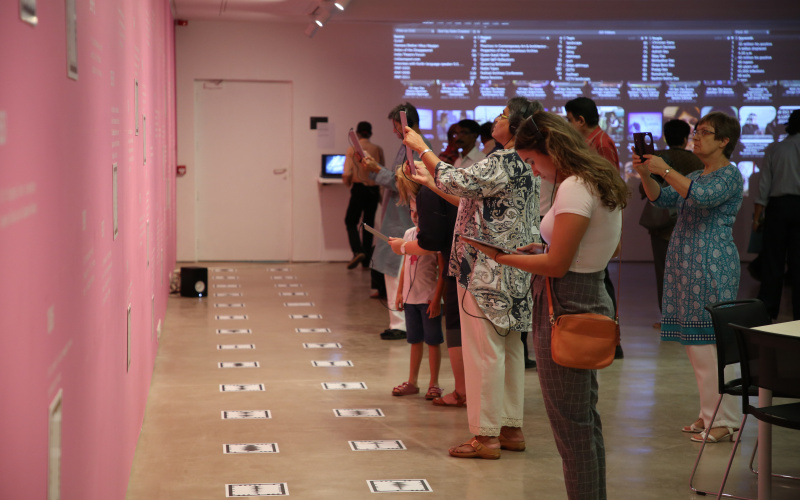global aCtIVISm: global citizen
For more than twenty years we have been observing the increased interlacing, worldwide, of politics, economics, communication, science and, ultimately, culture.
BY PETER WEIBEL
These phenomena, which one may summarize under the oft-cited term globalization, are intimately connected with technological development; on the one hand this led to that which Marshall McLuhan had referred to as early as 1968 as the “Global Village”, while, on the other hand to the advance of a global economic and political development which inspired selective protests. The new dialectic of local and global fits less the face of a “Global Village”, but rather the profile of power in the global meshing of companies and banks, of financial transactions and offshore companies; a new oligarchical elite, which threatens the function of political and civil institutions as much as it threatens the rights of individuals.
We are currently bearing witness to the state-sanctioned “elimination of the citizen” (P. Sloterdijk) rather than democratic civil participation. This is the reason behind the increasing number of new forms of protest by the outraged and the Indignados feeding off the individual’s experience of helplessness. This new form of spontaneous, non-institutionalized mass protest by individuals is a worldwide unequivocal phenomenon, which, in the Arab Spring and most recently in Turkey, demonstrates the way in which established systems of power, such as the reciprocal support among eastern dictators and economic and military interests, can – at least for a short moment of history – be interrupted.
Increase of the level of violence
One thing cannot be denied: supported by new communications media, social upheavals have occurred indicating the extent to which gulfs can emerge between traditional social and generational groups, such as lead to hitherto unheard of social tensions which then lead to violence. And yet the level of violence not only increases in Arab and Asiatic countries, but also in the core of the West itself. From the USA to Sweden, from France to England, repeated individual outbreaks of violence among youth and adults occur at the center of civil society that still demand convincing explanation. Our society clearly obstructs historical escape routes (escape buttons). Thus, an apparent hopelessness emerges from which it would seem that only violence can provide a way out.
In recent decades, NGOs (non-governmental organisations), carried by individuals, namely, a form of cooperation between individuals and institutions beyond state institutions, have played an important, groundbreaking and preparatory role for global activism. One recalls those worldwide spectacular actions and pictures of Greenpeace, Amnesty International and animal protection groups. Clearly, large social groups were not of the impression that the state sufficiently protected citizen’s rights, human dignity, the necessary climatic protection and the rights of animals, but rather harms them. It is for this reason that they founded new forms of organization to fill the gaps and to find a listening ear for their concerns among of the public.
The “global citizen”
Protests against the nuclear state and against the pollution of the earth’s atmosphere were initiated by citizen’s movements and not by the relevant state organizations, and have achieved a certain success or have led to the establishment of new parties. According to “global city” (Saskia Sassen, The Global City, 1991) and “global governance” (Brundtland-Bericht, 1987), there emerged a new form of social action, a “performative democracy” at the center of which stands the “global citizen”. This new type of citizen is concerned with local problems (such as the building of train stations) as well as global ones (such as climatic protection). “Vital interests for humanity as a whole, that do not take account of single national states are perceived by “global citizens”. Global activism is the result of the “global citizen”.
The traditional boundaries between individual and institution, subject and system are increasingly deferred, dissolved and contested by new activism. Public mass-demonstrations, from Puerta del Sol, in Madrid, Tahrir-Platz in Cairo, Tian'anmen Square, in Peking and Taksim Square in Istanbul, which spread through the new online media like a virus, provide examples not of the power of the masses, but of the power of networked communication and cooperation among otherwise powerless individuals. Historical mass demonstrations – with the exception of revolutionary situations – were organized and initiated from above. Today, civil mass protests are organized and initiated from below, e. g. Stuttgart 21. Global activism as a movement of the 21st century provides the first signs against all cultural pessimism, such that, paradoxically, in the place of pop-cultural mass consumerism a system critical mass culture can emerge.
Claim of the promises of the constitutional state and democracy
It appears that art might also increasingly become a public space whereby the individual may act autonomously and claim the promises of the constitutional state and democracy, from human dignity to freedom. By way of actions and small groups such as Pussy Riot and Femen, or mass movements, such as Occupy, more recently spectacular protest movements have repeatedly shifted into the focus of a worldwide public, which have shown in entirely different, but invariably impressively, what civic (lat. civis, the citizen) engagement can mean in the broadest sense.
Although the curators of large-scale art events, such as the documenta 13 or the Biennale di Venezia, 2013, take flight into untimely esotericism and occultism, the art system also displays a large movement of non-governmental art (NGA). Expressing criticism of politics, economics, church, institutions clearly continues to be – also in the apparently enlightened and liberal 21st century – neither self-evident nor broadly accepted – also not in the West. Today, artes liberales – the art of the free citizen is attributed a new global significance.
The exhibition global aCtIVISm at the ZKM | Center of Art and Media Karlsruhe poses the question as to how, today, artists express their concerns about existing conditions? Performance art of the 20th century was, in many cases, dedicated exclusively to the artist’s self-expression (Marina Abramović, The Artist is Present, 2010) and mostly serves the presentation of pictorial and sculptural problems. The performance mainly took part in the neutral art space, in the White Cube of the Museum, and is thus repeatable.
The art form of the protest movement
The social and emancipatory aspects arranged in the performance took place, for the most part, in public space, before evolving into activism, the objective of which was not the solution of artistic but rather social problems. The claim, or rather, Joseph Beuys’ claim of “everyone is an artist” (1979) and Wolf Vostell’s maxim “life is art – art is life” precisely characterize the preconditions for activism. As a protest of specific historical situations and constellations, it is not repeatable. Activism and non-performance is the art form of the protest movement: while taking outside institutions and with a socially motivated point of departure, it understands itself as a form of artistic expression.
Up until the mid-twentieth century, fine art was connected with the terms (canvass, bronze, paper, wood, etc.), and was thus exhibition art. However, from the 1960s on, artists began distancing themselves increasingly from the secure spaces of the institutions, and– while criticizing them at the same time – expressed themselves in ephemeral events, such as performances, happenings and actions. A political impulse, which led to a protest against existing conditions, was typical of many of the actions. Since the expansion of the arts in the mid-1960s art and action entered into a fusion, which liberated itself increasingly from a pure artistic intermediality, and which concerned itself more and more with social and humane agendas. Thus, art and agency flow into a new form of activism.
The function of artist shifts from producer of works to systems fugitive or systems critic, capable of occasionally adopting the tasks formerly the preserve of state authorities, the judiciary, the economy, and the administration. Not unlike philosophy and media theory, to some extent art forms the exile in which fundamental civil tasks can still be realized. Along with the function of the artist, the so-called artist’s works also change. Instead of oil paintings there now emerge flyers, placards and graffiti, instead of wooden sculptures online portals, transparencies, media appearances: instead of art films, Youtube videos are now produced.
Special field of artistic expression
As part of the 300-year anniversary of the founding of the city of Karlsruhe in 2015, the ZKM | Center of Art and Media is organizing an exhibition marathon Globale, designed to provide an overview of contemporary tendencies in global art practices. As prelude to this mega show, which will change at various intervals throughout the course of the exhibition, global aCtIVISm can be viewed from the end of 2013, an exhibition dedicated to the special field of artistic expression – a politically inspired exhibition which, by way of actions, demonstrations and performances in public spaces, draws attention to grievances and calls for the transformation of existing conditions. Thus, this should demonstrate how varied the role of art in different regions of the world can be. Thus, the exhibition is suited to effectively counter the conformism of so-called commercial art. By means of objects, photographic, cinematographic videographic and mass-media documents, the exhibition seeks to show global activism as the first new art form of the 21st century.
On the upcoming exhibition »global aCtIVISm« in the ZKM | Museum of Contemporary Art December 14, 2013 – March 30, 2014
Opening: Friday, December 13, 7 p.m.
